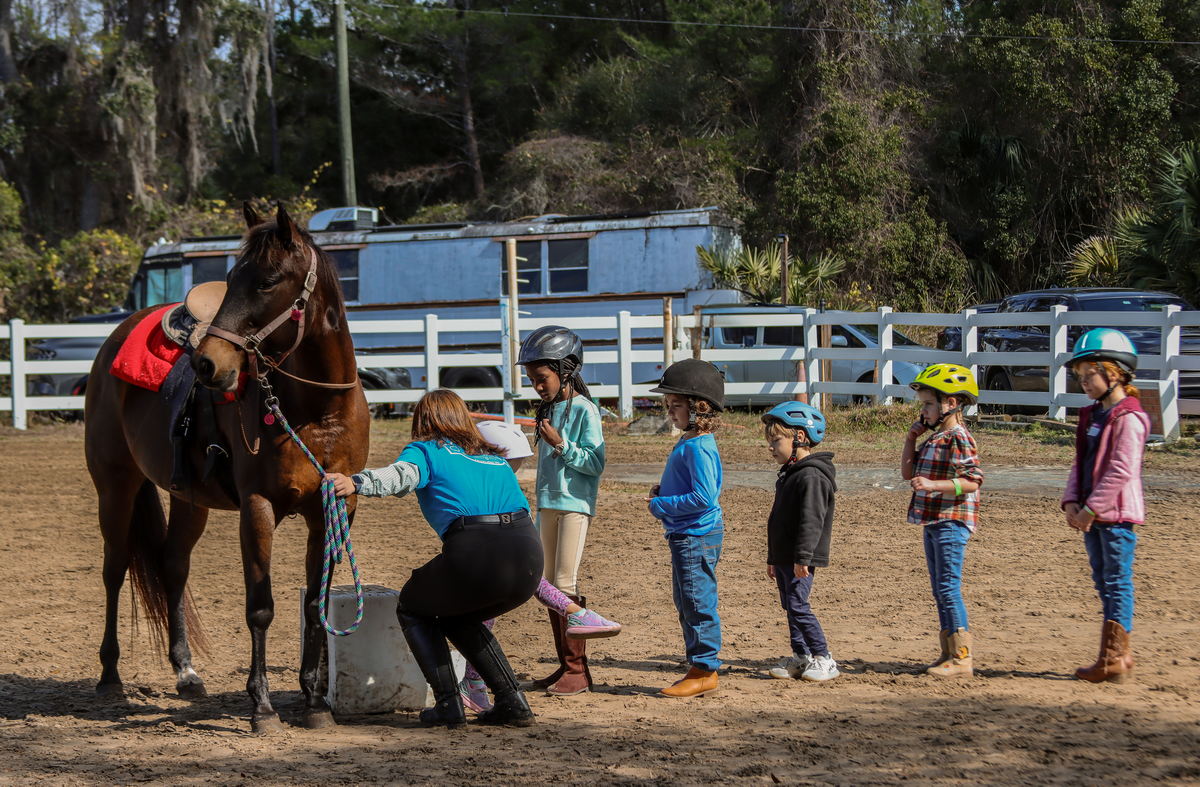

Every rider, no matter their skill level, makes mistakes in the saddle While some errors are small and easily corrected, others can affect your horse’s performance, comfort, and responsiveness
Learning to recognize and fix common riding mistakes will make you a more balanced, effective, and confident rider Let’s go over the most common riding mistakes and how to correct them.
Riding isn’t just about staying on the horse—it’s about communicating clearly, staying balanced, and working in harmony with your horse
✅ Good riding habits improve your control, safety, and effectiveness
❌ Bad riding habits cause miscommunication, discomfort, and potential injuries
By improving your riding posture, rein use, and leg aids, you can build a stronger partnership with your horse
One of the biggest mistakes riders make is not maintaining proper posture
❌ Slouching or rounding the shoulders.
❌ Leaning too far forward or backward.
❌ Letting the lower legs swing too much.
✔️ Sit tall with shoulders back and down—imagine a straight line from ear to hip to heel
✔️ Keep your weight evenly distributed in the saddle.
✔️ Engage your core muscles to help with balance and stability.
A well-balanced rider helps the horse move more freely and comfortably
Many riders pull too hard on the reins without realizing it, causing tension and resistance in the horse.
❌ Horse tosses its head or pulls against the bit
❌ Hands are too high, too low, or too stiff
❌ Rider balances on the reins instead of their seat
✔️ Keep soft, elastic hands and follow the horse’s movement.
✔️ Use light rein pressure—think of holding a butterfly without crushing it
✔️ Avoid balancing on the reins—engage your seat and legs instead.
A horse that trusts the rider’s hands is more willing and responsive
Many riders squeeze their legs too much, thinking it will help them stay on the horse. However, this often makes the horse tense and unresponsive
❌ Horse speeds up unexpectedly.
❌ Rider feels stiff or “stuck” in the saddle
❌ Legs feel tense and sore after riding
✔️ Let your legs relax naturally around the horse’s sides.
✔️ Use gentle leg cues instead of constant pressure.
✔️ Think of your legs as draping down, not gripping tightly
A relaxed leg allows better movement and balance
Many riders make the mistake of looking down at their hands, horse’s head, or footing instead of looking ahead.
❌ It throws off balance and can make your horse feel uncertain
❌ Riders who look down tend to lean forward unintentionally
❌ It affects the horse’s ability to move straight and confidently
✔️ Keep your eyes up and look where you want to go
✔️ Imagine a focal point ahead of you to stay balanced.
✔️ Trust your horse—they don’t need you staring at their head
Your horse follows your focus—where you look is where they will go!
Your core muscles play a huge role in staying balanced and controlling your movements Many riders rely too much on their hands or legs instead of their core stability
❌ Difficulty staying balanced at the trot or canter
❌ Feeling bouncy and unstable in the saddle.
❌ Relying on reins or stirrups for balance
✔️ Work on core-strengthening exercises off the horse (planks, yoga, pilates).
✔️ Focus on engaging your core rather than gripping with legs or hands.
✔️ Imagine your body as a strong column supporting your ride.
A strong core leads to better balance, smoother transitions, and a more secure seat
Horses rely on clear, consistent cues to understand what you’re asking. Mixed signals lead to confusion and frustration
❌ Horse hesitates or ignores commands
❌ Rider accidentally gives conflicting cues (ex: pulling reins while asking to go forward).
❌ Horse seems frustrated or resistant
✔️ Be clear and consistent with every command.
✔️ Use soft, subtle cues before increasing pressure
✔️ Always reward the correct response to reinforce learning.
Good communication leads to better responsiveness and willingness
Riders often focus too much on controlling the horse’s head and forget about maintaining a steady rhythm
❌ The horse moves inconsistently, speeding up or slowing down
❌ The ride feels unbalanced or rushed
❌ Horse becomes tense instead of moving fluidly
✔️ Focus on maintaining an even rhythm at all gaits.
✔️ Use your seat and legs to regulate speed instead of reins.
✔️ Count beats in your head or ride to music to stay in sync.
A steady rhythm helps your horse move smoothly and with confidence
Some riders overcorrect every little movement, making the horse tense and confused
❌ Rider constantly adjusting reins or legs instead of letting the horse move naturally.
❌ Horse becomes stiff and overreacts to small changes
❌ Ride feels forced instead of fluid
✔️ Give your horse space to move naturally
✔️ Correct only when necessary, then let go.
✔️ Trust your horse’s instincts—don’t try to control every step
Less is more when it comes to effective riding
Every rider makes mistakes, but the best riders work to correct them and improve over time
✔️ Stay balanced and use proper posture.
✔️ Keep rein and leg pressure soft and consistent.
✔️ Focus on rhythm, clear communication, and trust.
With awareness, patience, and practice, you’ll become a stronger, more effective rider—and your horse will thank you for it!
Get a photoshoot with edited photos
Book by to secure this special rate